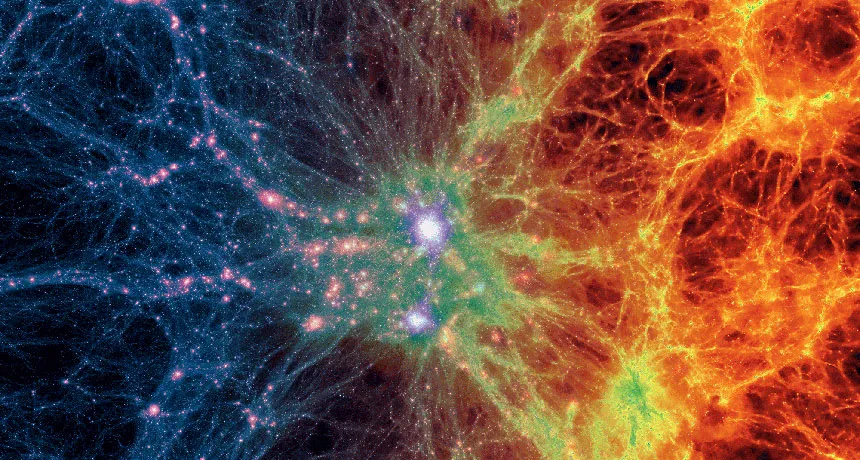
TANGLED Filaments on the cosmic web, the subject of a new book, come together in a massive galaxy cluster in this image from the Illustris Simulation. Dark matter density on the left gives way to gas density on the right.
Illustris Collaboration

TANGLED Filaments on the cosmic web, the subject of a new book, come together in a massive galaxy cluster in this image from the Illustris Simulation. Dark matter density on the left gives way to gas density on the right.
Illustris Collaboration